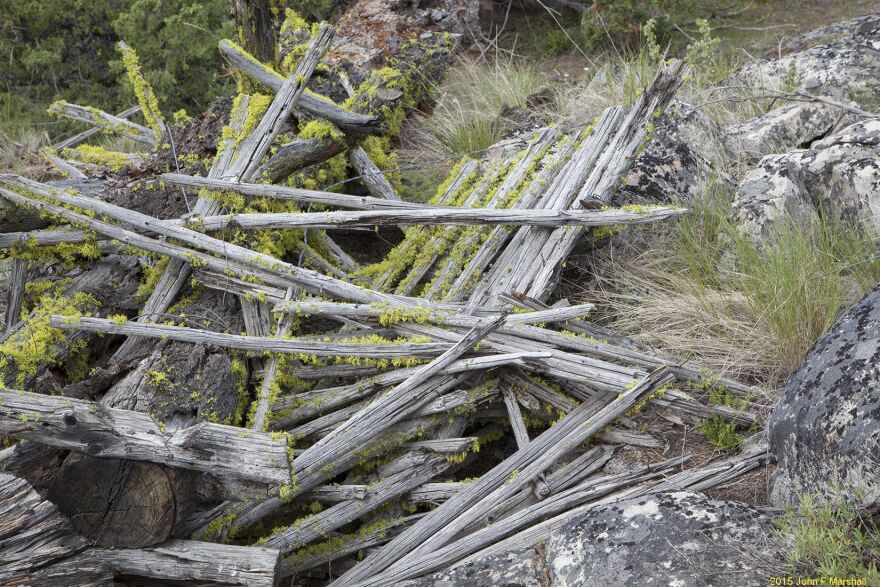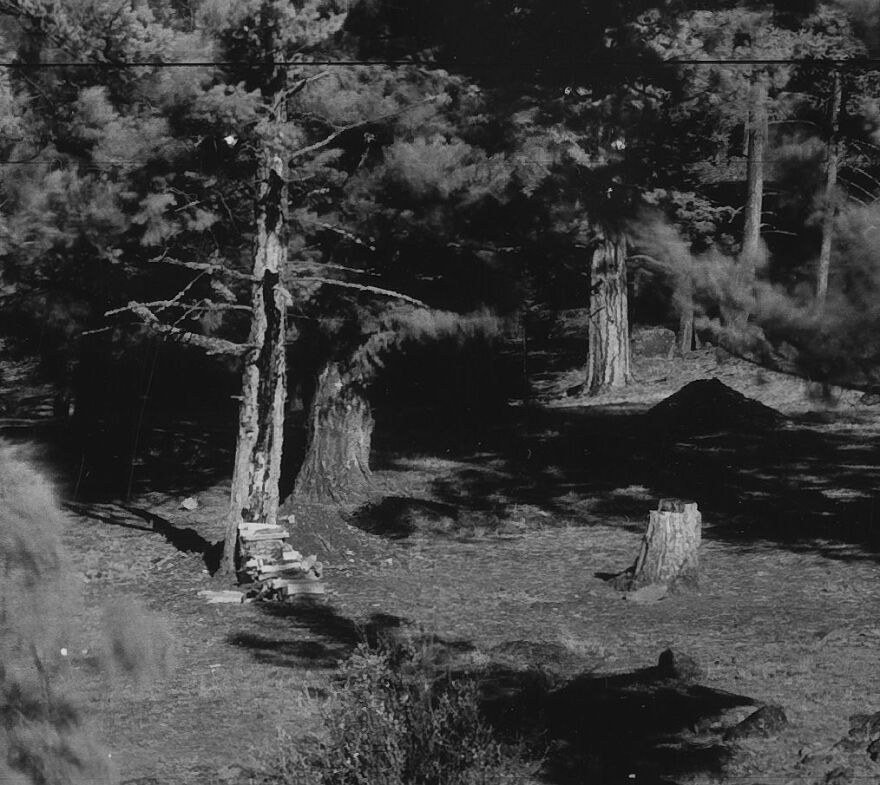
A photographer from Wenatchee (Washington) has made a revealing discovery at the scene of a remote and long-abandoned fire lookout. Who knew a pile of very old firewood could tell a story? Correspondent Tom Banse brings it to us.
Photographer John Marshall has a contract to make cross-time comparisons by re-photographing landscape panoramas from Western fire lookouts. In the 1930’s, Forest Service crews snapped the original panoramic photos. That's what brought Marshall to the ruins of the Juniper Point lookout in northern Okanogan County, Washington.

John Marshall: "I spent quite a bit of time walking around and trying to find features from the original photograph."
Marshall says he was "floored" to find a weathered, but unrotten pile of firewood in the same spot from 75 years ago.
John Marshall: "It shows how in the dry forest environment, decay is not the primary vehicle by which dead wood disappears. It's fire."
Marshall's work has made him a passionate advocate for increasing controlled burning of forest lands to reduce the fuel load and restore a semblance of the natural lifecycle.

Controlled burns - also known as prescribed fire - happens less in Washington state than in neighboring states because of state rules to limit smoke impacts on nearby communities.
Marshall estimated that pre-1900, low-intensity wildfires burned through the mid-elevation Ponderosa pine and Douglas fir forests of the Inland Northwest about every seven to 15 years.
The survival of remnants of the fire lookout at Juniper Point underscore that flammable, woody material - such as limbs and twigs - have built up in that part of the Loomis State Forest for more than 75 years.

"It's missed about four or five fire cycles," Marshall said.
Surrounding forests in Okanogan County ignited in catastrophic fashion this past summer, resulting in the biggest wildfire in modern Washington state history.
In an interview Wednesday, Marshall said Juniper Point was one of the most interesting among the many trips he has made to old lookouts on assignment for the U.S. Forest Service or the Washington State Department of Natural Resources.
"There was never a tower at Juniper Point, only a platform in a tree known as a 'crow's nest,'" he said. "I spent about six hours looking for the site [in June]. It was not on a ridge-top but rather mid-slope."
Juniper Point was abandoned as a lookout site in 1941. At the site, Marshall said he also found the bleached wood remains of a tent platform and an earth and stone cooler or oven.
Last week, Marshall and an off-duty wildland firefighter carried a 16-foot orchard ladder to the old lookout site to re-capture the 1938 panoramas from the same height.
"If you look at the two photographs, the open spaces have largely been filled in with small Douglas fir trees," Marshall pointed out.
"So you have more fuels of two types--both the dead fuel and the live fuel. It all adds up to one very flammable forest."
Copyright, 2015 KLCC


